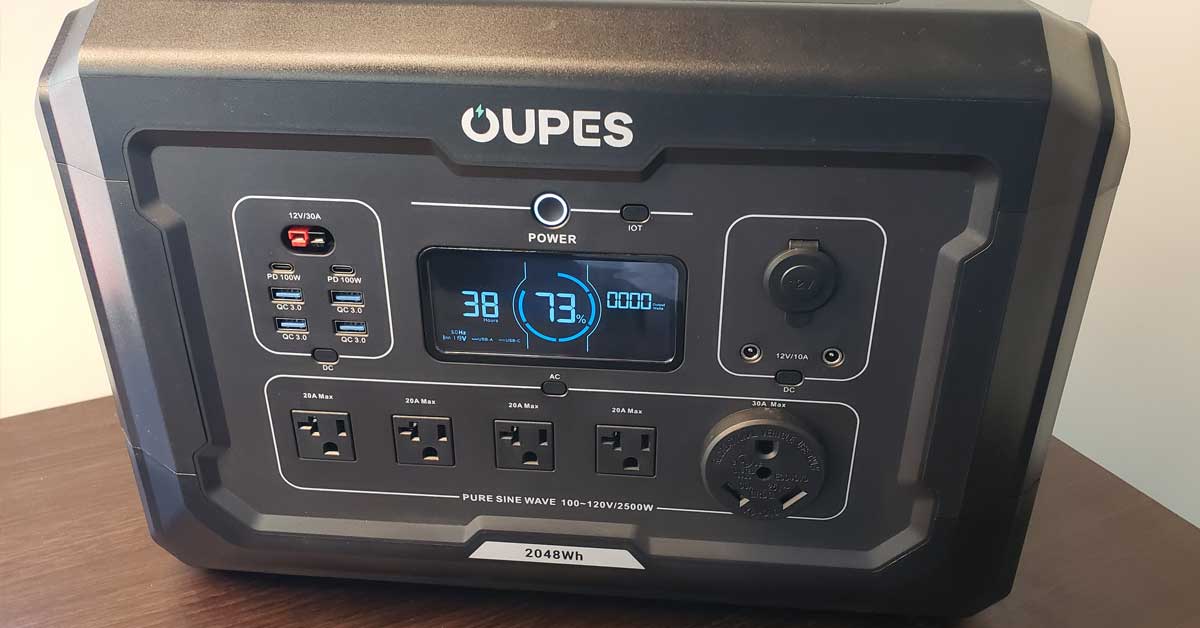Whether you’re looking for emergency backup power or a total off-grid power solution, OUPES is an up an coming manufacturer that’s been turning a lot of heads.
If you’ve spent some time researching portable power, you’ve probably heard of them. The newest addition to their lineup is the Mega 2. This is a relatively large, 2,048Wh power station that utilizes the latest LiFePO4 battery cell technology.
Review of the OUPES Mega 2
Showcasing a plethora of features, NerdTechy was gifted a Mega 2 unit to thoroughly test out and review. So that’s what we’re here to do.
Prefer a video? Checkout our YouTube video review of the Mega 2 below:
Today, I’ll be taking you on a deep dive into the OUPES Mega 2 and explore all that it has to offer. I’ve personally spent the last 3 weeks using it. Within that time, I feel that I’ve garnered quite a bit experience with it to warrant an honest review of it.
Rather than re-hashing all of the selling points and features, I’m going to get straight to the point and discuss what I liked, what I didn’t like, and ultimately if I would recommend it. Let’s begin.
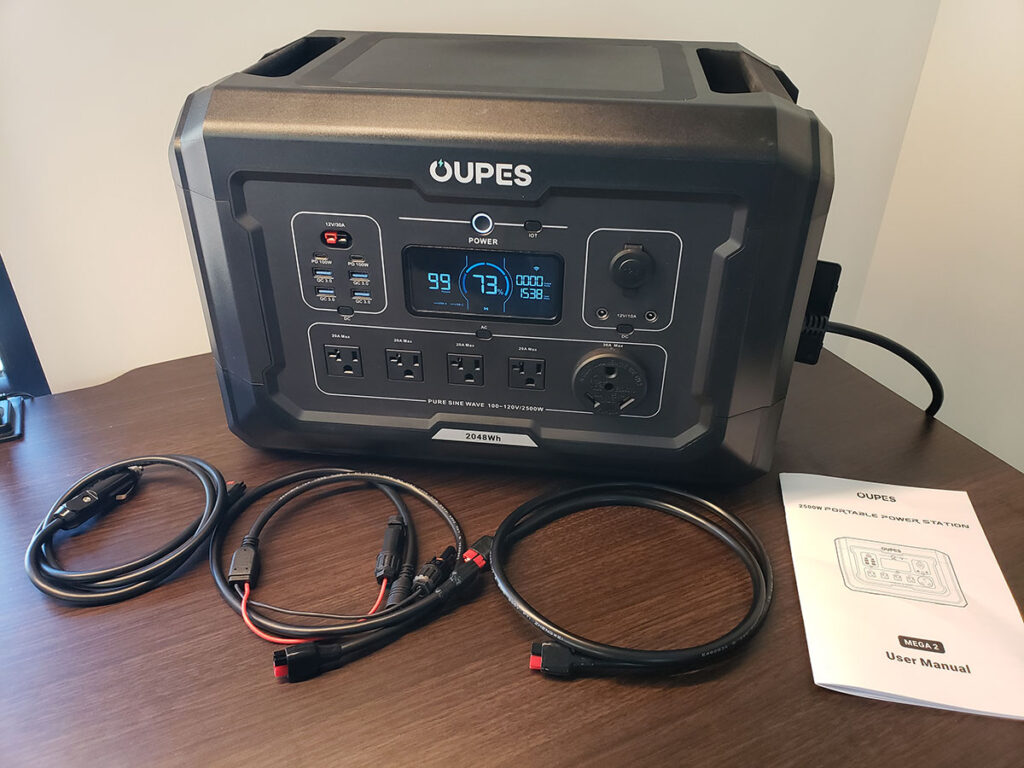
What I Liked
Huge capacity that’s expandable
The 2,048Wh capacity is plenty of energy storage for multiple days off-grid. This capacity is inline with the top-tier models from BLUETTI, EcoFlow, and Jackery, but the OUPES is priced $300 to $500 less for the same watt-hours.
If for any reason you feel as if you need more capacity, you’re free to expand it with the use of one to four individual B2 extra battery modules. With a single B2 priced at $1024, each one adds an additional 2,048Wh and can even be used as a standalone power station.
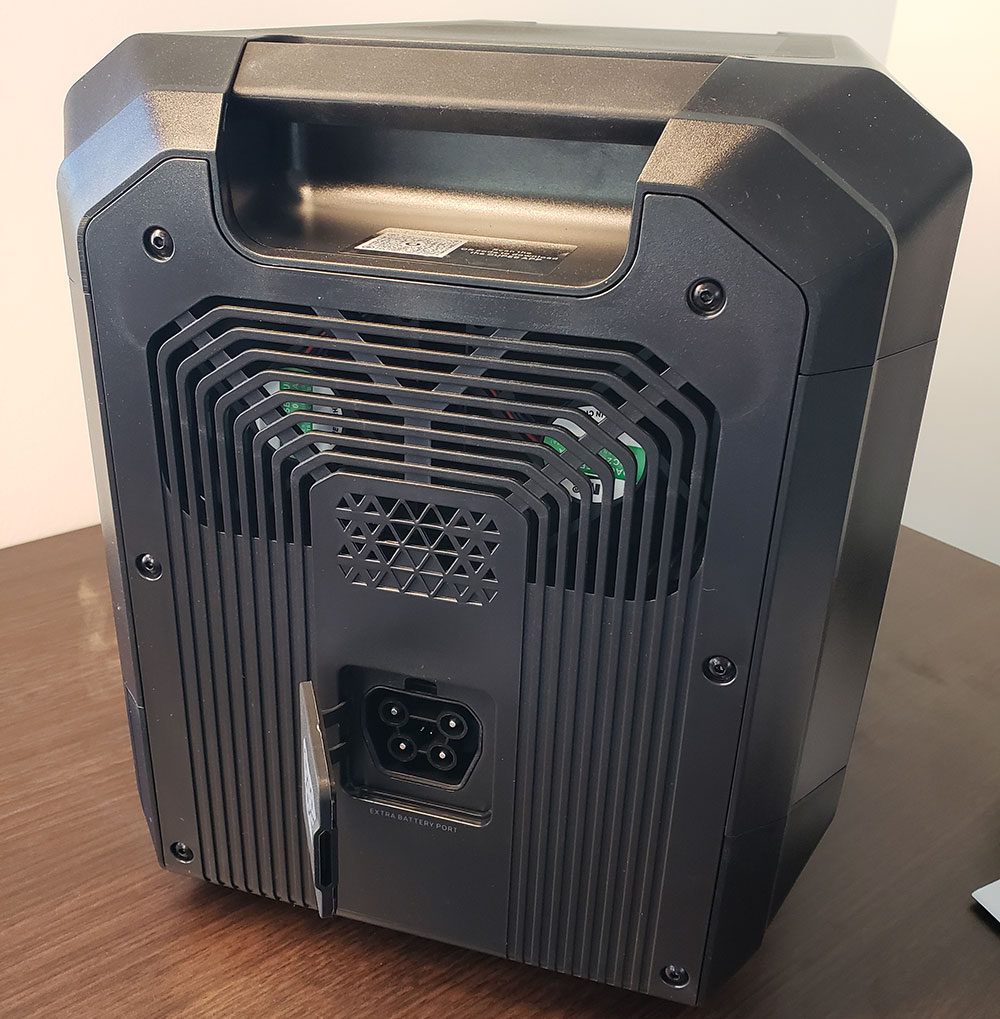
LiFePO4 technology
Rather than using traditional lead acid or lithium ion cells, OUPES opted for LiFePO4 cells due to their increased longevity and reliability. While a lead acid cell typically lasts for 500-800 charge cycles, LiFePO4 technology is far-superior, offering up to 3,500 cycles before any degradation is noticed.
Plenty of outputs
The front panel is host to a plethora of outputs. There are 15 various outputs including 4 x USB-A QC 3.0, 2 x USB-C PD 100W, 1 x 12v/30A Anderson, 3 x 12v DC, 4 x 20A grounded outlets, and 1 x 30A RV port.
It’s wonderful to see multiple fast-charging USB ports, but most impressively is the 30A RV port. Most power stations aren’t capable of delivering 30A power to an RV – it’s a game changer for those who want to supply power to their RV in any situation.
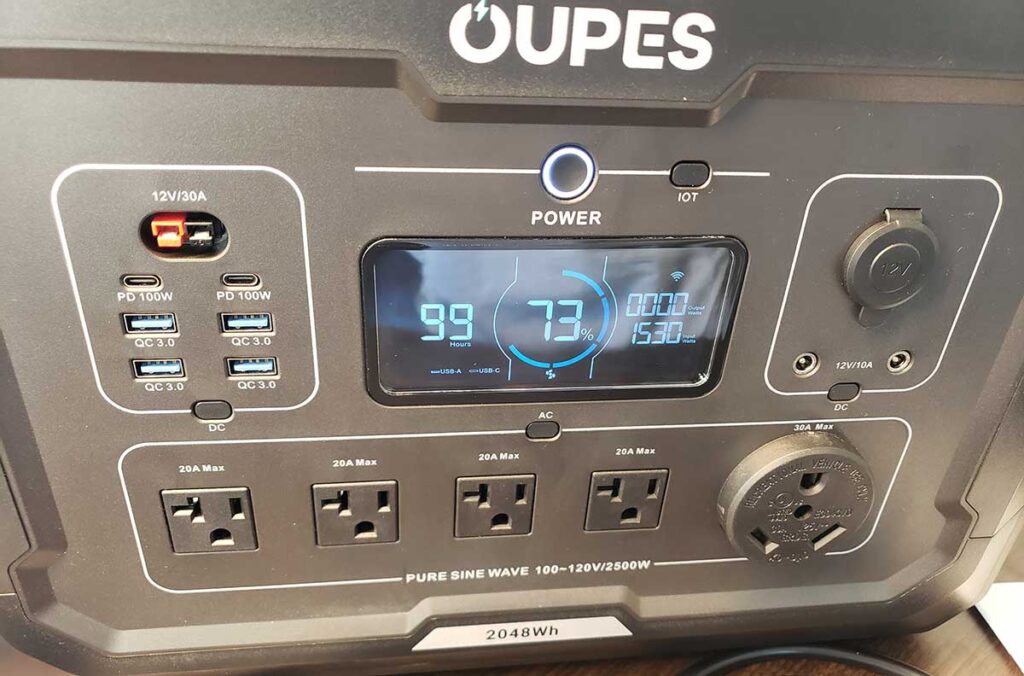
Digital display
I really enjoyed the colorful LCD. It’s brightly lit but goes into a dim state when it’s not used for a while. It offers a clear insight into what’s currently active (DC, AC, etc.), the remaining battery life, input/output wattage, and any warnings or failures that may occur.
The display is clearly visible in ambient light and total darkness, but it does struggle a bit with direct sunlight. There’s a glare that makes it hard to read when the sun is shining directly into the LCD. Most screens are this way, so I don’t really see it as that big of a deterrent.
Super fast AC charging
In my opinion, one of the most significant features that I look for with any power station is its rate of re-charge. If you’re waiting around for it to charge, you aren’t outside living your best life off-grid.
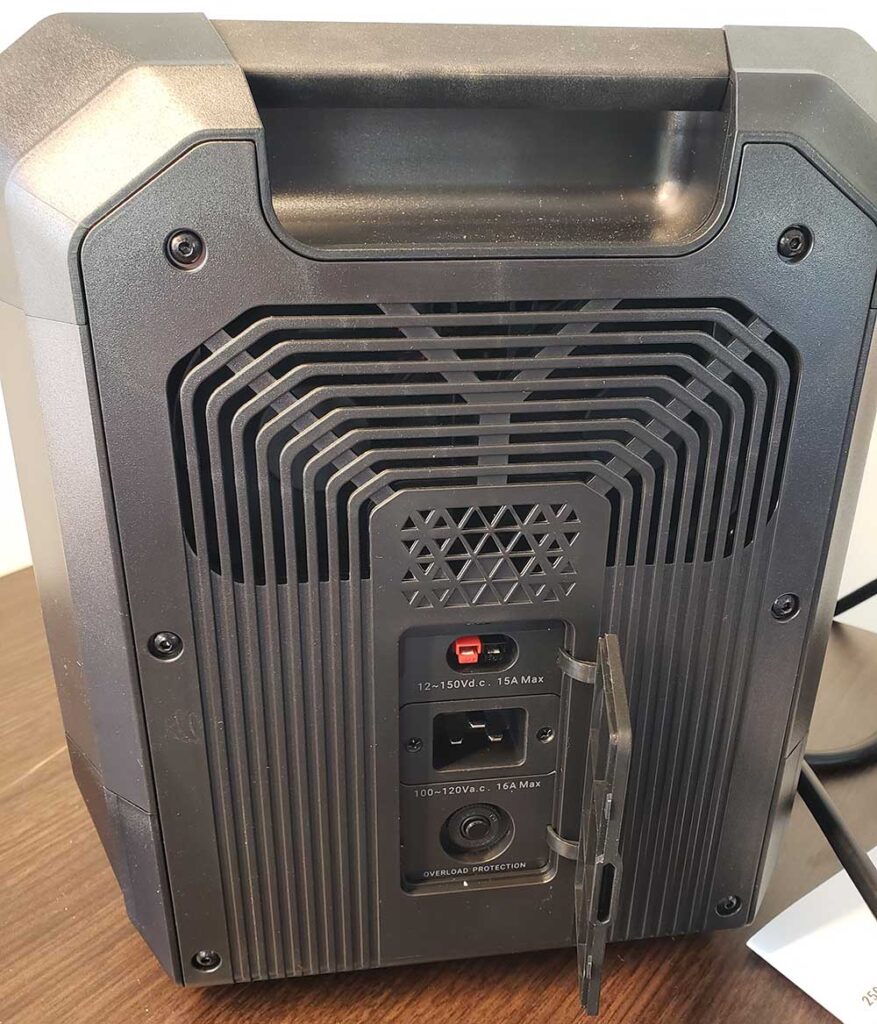
Thankfully, the Mega 2 supports a massive charge input of up to 3700W. But this estimate is a little deceiving, so hear me out. 1600W is the stated maximum for AC input, while the max solar input is 2100W. In reality, you’re probably never going to achieve a full 3700W input, unless you have a huge solar array and re-charge it from the wall simultaneously.
Regardless, the high AC input is wonderful, but it should be known that I never saw it go above 1530W, even though OUPES claims a 1600W max input. However, I found that it charges up from fully depleted in just under two hours, which I find to be quite acceptable.
Integrated handles
The top corners have built-in handles that make it somewhat easy to lug around. Although I wouldn’t call the unit lightweight, the handles make it much easier to maneuver if you’re a strong person or if you simply have another person help you.
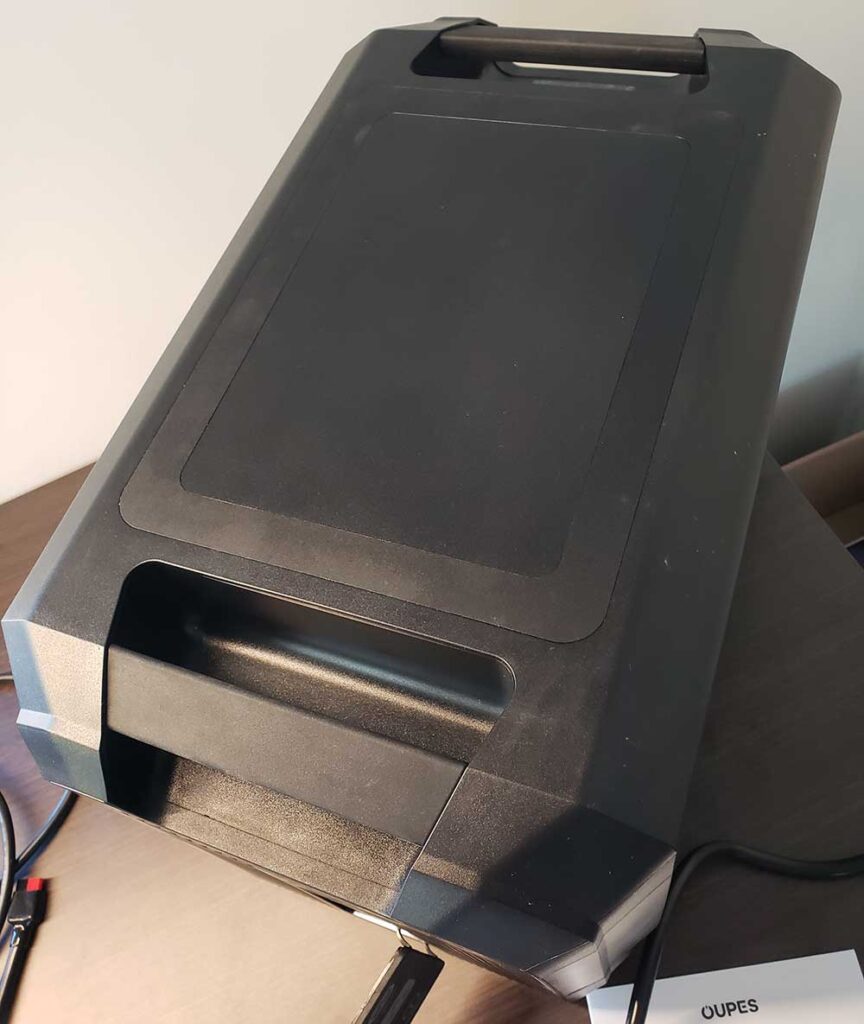
Color scheme
I love the blacked out color scheme. It carries a streamlined appearance that gives a sleek and professional appearance. Although it’s only available in one color scheme, it’s tastefully done without the use of any loud colors like orange, red, or something bright.
What I Didn’t Like
No time remaining feature for re-charging
While I do love the LCD, it doesn’t give you any estimate for the remaining duration required for a full charge. Simply put, it doesn’t tell you how much time you have until the unit is fully re-charged.
Thankfully, however, it does tell you an estimate (in hours) for remaining time when you’re actively discharging it or using any of the outputs.
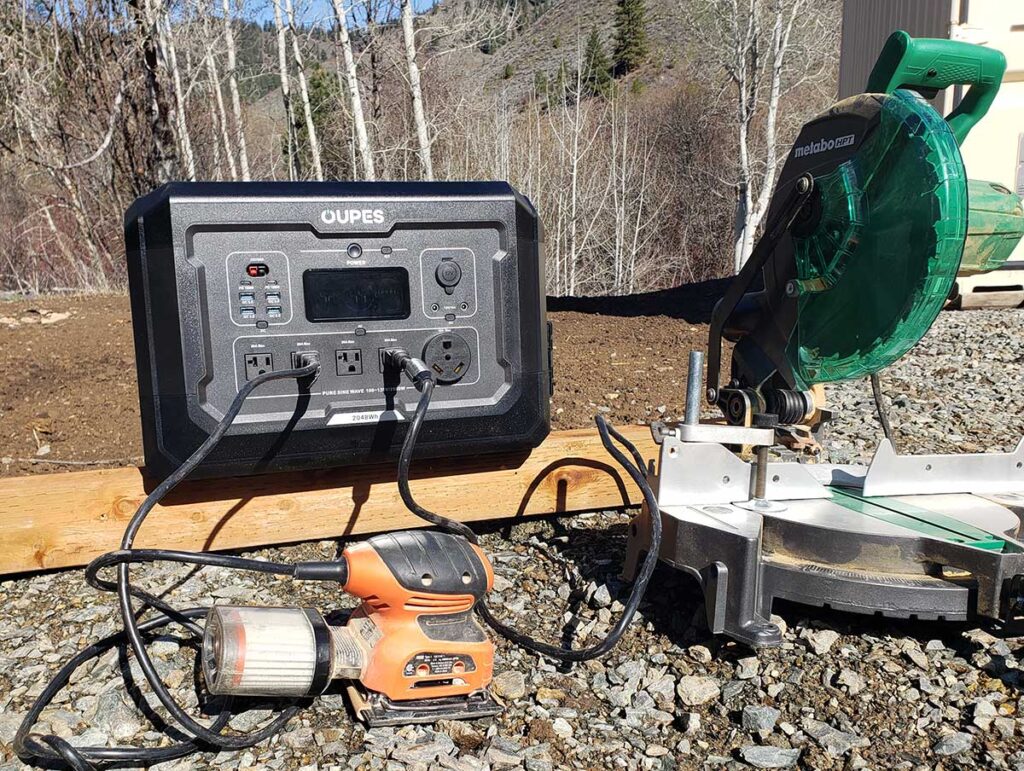
Terrible app
The OUPES app is only available on the iOS App Store and you won’t find it through Google Play. However, they do have it available as an APK file, so you can install it on your Android device directly through this.
Unfortunately, the app is a waste of time. I tried to use it on both iOS and an Android phone and it was nothing but frustration. It briefly walks you through a pairing process, but even after nearly 10 tries, it fails. The connection either doesn’t show the power station, or when it does, it simply refuses to pair. Needless to say, the app needs some serious work before it’s ready for use.
Luckily, the app isn’t necessarily a requirement. You can freely use the Mega 2 power station without the app, and access all of the functionality without it.
AC takes about 15 seconds to turn on
When you want to use any of the AC outputs, you’ll need to wait about 15 seconds as their is a delay between when you push the “AC” button and when the outlets actually provide power. It’s a minor annoyance that shouldn’t be overlooked.
The screen will display that the AC is on, but the actual power doesn’t become available until this slight waiting period.
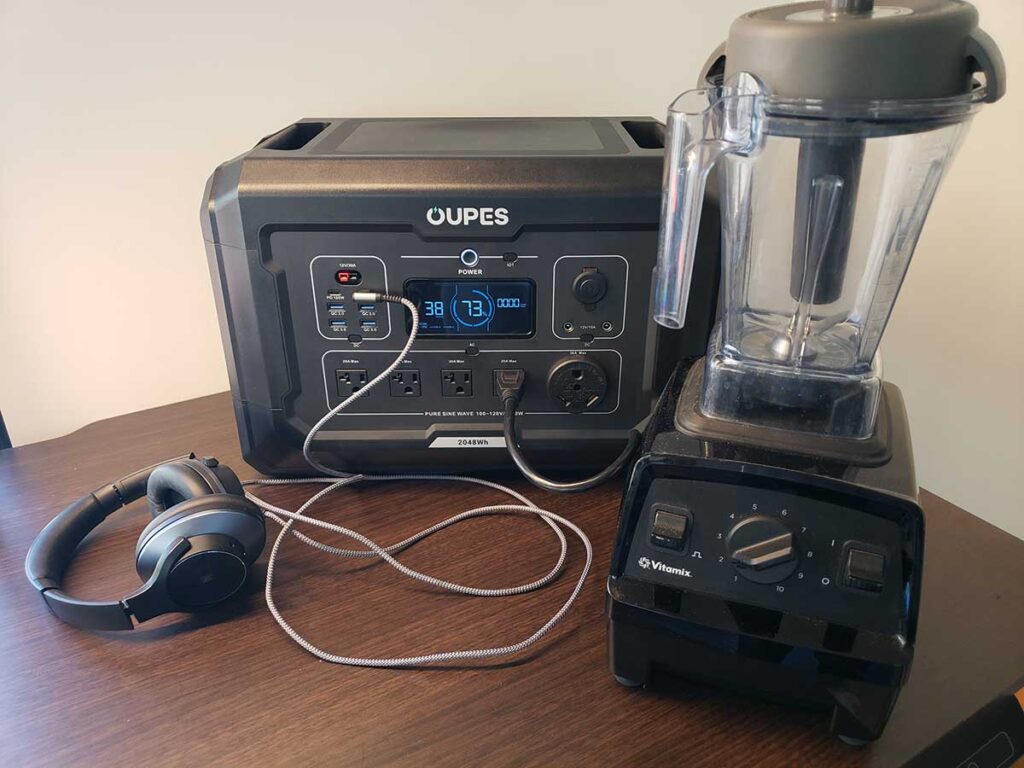
Heavy
Don’t let anyone fool you and try to tell you that this thing is “lightweight” because it’s not. It weighs 48lbs, which is quite substantial. Although it’s on par with other power stations of this capacity, it shouldn’t be considered “lightweight” by any means.
Would I Recommend the OUPES Mega 2?
Overall, yes, I would recommend the OUPES Mega 2 as a reliable power station. Although it has some quirks that are worth mentioning; the app sucks, the AC has a delay, and there’s no estimated time given for re-charging.
Despite these minor setbacks, the Mega 2 provides plenty of capacity and a nice assortment of outputs/inputs to make it a worthwhile contender in the portable power station industry.
As with any large capacity power station, this thing is hefty and kind-of expensive. But after using it for a few weeks, all-in-all, it’s well-functioning and designed fairly well.
Meet Ry, “TechGuru,” a 36-year-old technology enthusiast with a deep passion for tech innovations. With extensive experience, he specializes in gaming hardware and software, and has expertise in gadgets, custom PCs, and audio.
Besides writing about tech and reviewing new products, he enjoys traveling, hiking, and photography. Committed to keeping up with the latest industry trends, he aims to guide readers in making informed tech decisions.

